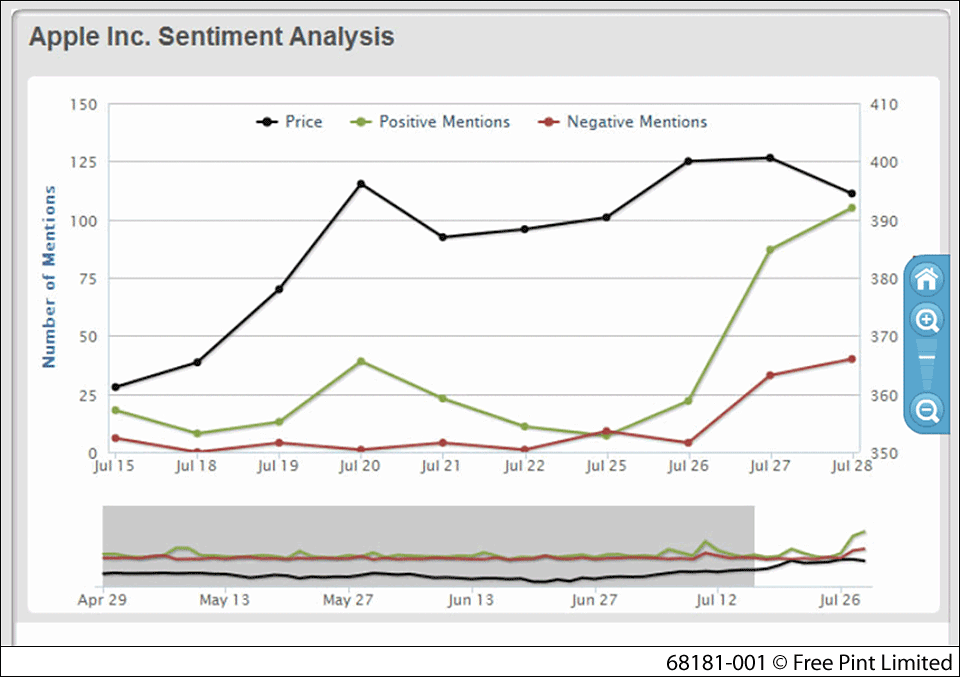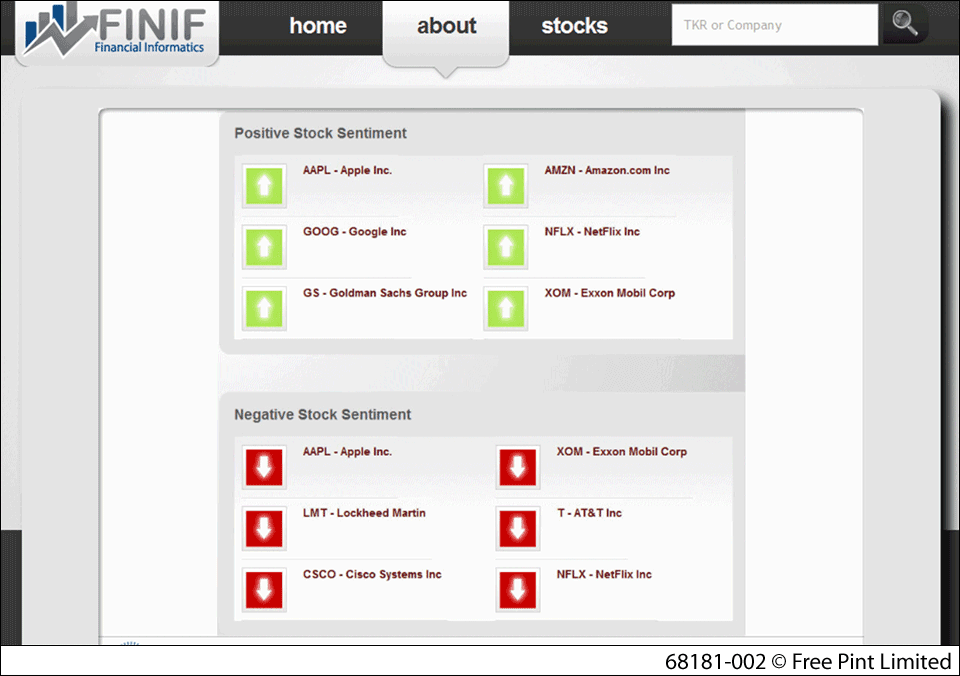 FINIF mini review: Part 1
FINIF mini review: Part 1
Jinfo Blog
6th March 2012
Abstract
FINIF bills itself as an informatics platform that specialises in financial sentiment analysis and market chatter. The technology provides the capability to analyse financial data, news and opinion from sources such as Twitter, reputable news providers and Securities and Exchange Commission (SEC) filings.
Item
FINIF (www.finif.com) bills itself as an informatics platform that specialises in financial sentiment analysis and market chatter. The technology provides the capability to analyse financial data, news and opinion from sources such as Twitter, reputable news providers and Securities and Exchange Commission (SEC) filings.
Online sentiment analysis products are more often found in the marketing world, where brands and products are often searched to derive the public’s attitude about, say, Pampers over Huggies. Some sentiment analysis platforms go so far as to try and chart degree of feeling. However, the machine behind all sentiment analysis products requires the use of natural language and textual analytics in order to measure public opinion, and even attitude, appropriately within the bounds of outlets such as social media, blogs, forums and news.
As one may imagine, attempting to measure the public’s attitude is a tricky business. However, noting a degree of indifference to one brand of running shoe over the other may be a bit simpler than trying to figure out the jibes and vibes of a fickle US stock market. But, this is just what FINIF creators Dr Bill McDonald and his son, FINIF CEO Michael McDonald, have set out to do. Dr McDonald is a Professor of Finance at the University of Notre Dame, and he worked for many years in the private sector investment banking world, where he spent much time researching capital markets. So, I’m more than comfortable that the guy knows his financial data and analysis.
There are basically three different types of resources that FINIF mines in order to provide analysis: Twitter, news and SEC filings of US public companies.
-
There are an estimated quarter of a million Twitter users that tweet thousands of times daily about the stock market. Luckily, we don’t have to take just one tweeter’s word for it. Rather, we can see across the board what several may be saying about a particular stock or company. This is where sentiment analysis really becomes useful.
-
The SEC filings, such as a 10-K or 10-Q, are scanned and parsed using a proprietary algorithm that incorporates textual analysis that the McDonalds devised specifically for the purpose of combing through financial documents.
-
FINIF scans news from reputable sources such as Barron’s, the Wall Street Journal and BusinessWeek in real-time.
The positive and negative sentiment mentions for a specific company are plotted onto graphs in comparison to its stock price. Or, the daily sentiment of the larger market, such as the S&P 500, can be plotted. Other potential analysis include comparing which stocks have the most positive and negative sentiment, as well as trending stocks to decipher which companies are receiving news or chatter during a particular time period.
Figure 1: Apple sentiment analysis graph
Figure 2: Most talked about companies graph
FINIF is a centralised tool that can capture the thousands of tweets and news bits that are created daily about the merry-go-round that is the US stock market. Professor McDonald in no way claims for his creation to be the secret to cracking the market, but he does promote it as a tool to try and make a somewhat educated guess for very short term analysis and trading. FINIF, according to McDonald, gives the active trader some insight on what is happening right now. Having the information and tools like FINIF to make your best guess on where stocks may be headed for the day (or hour!) is better than going to a fortune teller, and it’s probably even more useful than listening to that screaming red-faced guy on CNBC.
In Part 2 of this review, I’ll detail how FINIF uses its own key word dictionary, natural language and contextual analysis to mine financial documents, which tend to have their own unique terms and meanings.
- Blog post title: FINIF mini review: Part 1
- Link to this page
- View printable version
- FINIF mini review: Part 2
Wednesday, 7th March 2012
Register for our next Community session:

Team demand and AI
22nd January 2026
Latest on our YouTube channel:
Read on the Blog:
December 2025 update
3rd December 2025
- Team roles and AI (Community) 26th February 2026
- Team demand and AI (Community) 22nd January 2026
- Transforming knowledge management at BASF – GenAI and the evolution of QKnows (Community) 10th December 2025

